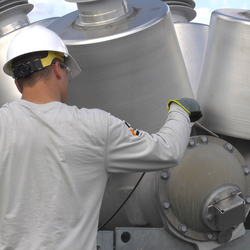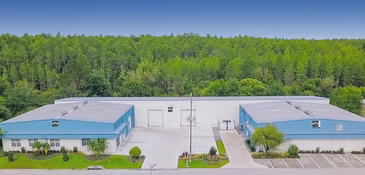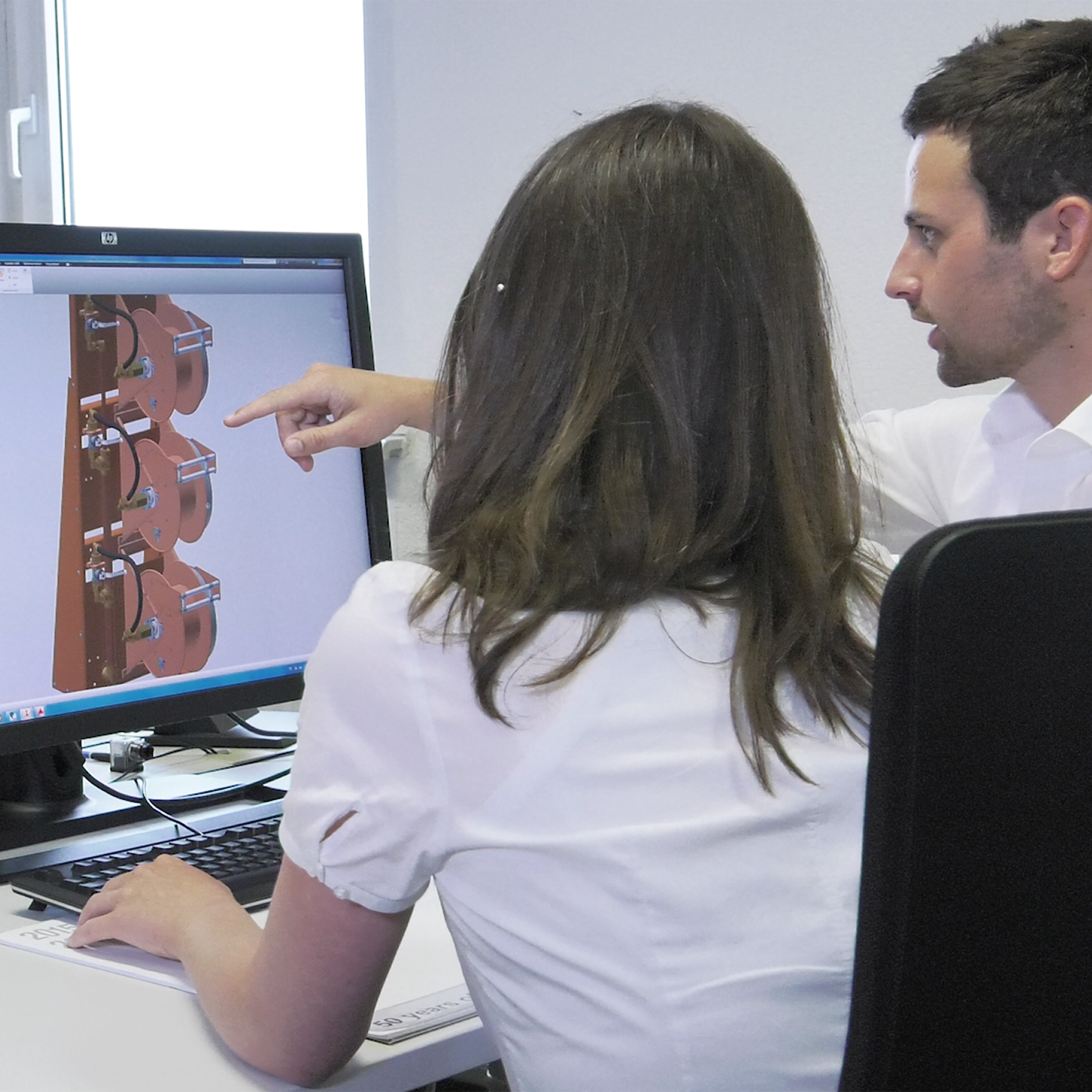Authored by Billy Lao, General Manager & CEO for DILO Company, Inc. and DILO Direct
As we kick off 2024, we are excited to see, hear and be a part of the changes that are occurring with the insulating gas industry. The electrical power utility sector and industrial power sector as it relates to insulating gases are experiencing major changes that impact the approach to insulating gas handling, accountability and environmental stewardship. Change is here and we need to change with it!
From the 19th century into the 20th century, oil, air and even water were used as interrupting mediums for circuit breaker applications (1). SF6 gas has been a major part of our industry since its introduction in the 1950’s (2). Over time, SF6 gas has replaced the need for oil as an electrical insulator and arc quencher. As a young field service technician in the early 90’s I was still working on large transmission substation air-blast circuit breakers, which were expensive and complex to maintain. While there still are a few oil filled circuit breakers (OCB’s) and some air-blast circuit breakers throughout the power grids globally, the majority of the transmission circuit breaker fleets have been largely replaced by SF6 gas insulated equipment (GIE).

Gas Insulated Substation (GIS) technology originally was introduced in Japan as the concept and design of an electrical substation where an insulation medium was needed to reduce the footprint for areas where land/space were scarce (3). The design and concept of GIS changed our industry to not only provide a solution for small space applications, but also contributed to the environmental benefit to reduce the need of a large outdoor substation footprint. While in some cases the application of GIS could be expensive, the positive environmental impact for land conservation, visual or cosmetic environmental impact outweighed the cons. The applicability for large cities in need of substations where limited land was available brought on a new and fresh solution to providing electrical service for city centers, hospitals, manufacturing, printing facilities, and a long list of other industries which benefit from GIS applications.
Distribution and medium voltage applications are the easy target! SF6 Regulations at federal, state, and local levels are impacting change. The easiest and most fruitful adjustment is where it is simplest to do so. SF6 gas found in medium voltage applications are easily being replaced by switchgear and medium voltage circuit breakers with vacuum interruption technology and clean air insulation. At the distribution and power generation classification levels, especially where higher current break applications require the capabilities and benefits that fluorinated insulating and arc quenching gas provides, SF6 and other alternatives such as Fluoronitrile mixture insulating gases may continue to be a factor. We are not far off from the time where SF6 gas at the medium voltage level will be replaced, by my estimation of approximately 98% with non-SF6 alternatives. In fact, I believe we are not much further from 100% replacement of all SF6 GIE for equipment at rated voltages of 38kV and below.
How about up here?! High voltage equipment above 38kV (including 69kV to 245kV) are the future low hanging fruit. In some applications (current ratings and BIL(4) considered) this is not a difficult target and is already a reality. GE Grid/Vernova announced this year the installation of the first G3 GIS station near Zurich, Switzerland (5). In mid to late 2022, Hitachi Energy and TenneT announced the installation of a SF6 gas free 420kV substation at TenneT’s grid connection in Germany (6). These new substations reflect changes already affecting the 345kV and above voltage ranges. As solutions for SF6 gas alternatives with gas insulated mixtures like C4FN gas (7) become more popular and gain further ground in the market, we can expect to see SF6 gas fleet numbers slowly dropping.

Regulating and reporting equals accountability and reduction of emissions. Due to the high Global Warming Potential (GWP) of SF6 gas and an effort to reduce CO2e emissions, California Air Resources Board (CARB) released new regulation requirements for reporting in early 2022(8). The European Union also has worked hard to introduce new regulation, which CARB’s regulation closely imitates. These changes have created a greater incentive for the original equipment manufacturers (OEM’s) of gas insulated equipment to step up their game regarding offering SF6 gas alternatives. This also opened the door for the Environmental Protection Agency (EPA), New York State Department of Environmental Conservation, as well as other states to consider adaptation of similar regulation changes.
These changes, including banning the use of SF6 gas and/or replacing aging and leaking SF6 gas GIE with SF6 gas alternatives, came sooner than originally expected; However, not too far from where OEMs were with research and development of SF6 gas alternatives. CARB here in the USA and the European Union have set the pace and an example for environmental agencies worldwide. The timeline to ban the use of SF6 gas and fluorinated gas applications where possible has greatly influenced the road map for the future of insulating gases.

What relationships do not come without a challenge? The original supplier of C4FN & C5FK gas mixtures, who is coincidently the patent holder for the use of C4FN gas mixtures in electrical switchgear, made a surprising announcement in December of 2022 that made the Christmas Grinch cringe. The announcement from 3M regarding PFAS production to cease by 2025 (9) was a surprise and put a true level of concern with utilities and OEM’s working on SF6 gas alternative solutions. However, that concern was easily overcome by end of Q1-2023 by means of a collaboration of universities, gas handling equipment providers such as DILO and OEMs to locate, identify and quantify new suppliers.
As of today, newly identified suppliers of C4FN gas mixtures are already announcing the increase in production to meet the demand. Analysis and testing results are promising and new technologies for handling, and field analysis of gas mixtures are available (check out DILO’s product line for alternative insulating gases). In addition, a number of projects funded by the Advanced Research Projects Agency-Energy (arpe-e) (10) are under way and working towards development of new technologies and improvement of existing technologies for leak detection, filtration and analysis, as well as options for other insulating solutions.
Overall, the changes we have experienced these past few years will continue to influence the electrical utility, power and insulating gas industries. The changes will move our industries forward to support the goal to reduce CO2e emissions. DILO Company Inc. and DILO Direct are positioned with new solutions, and improved technologies for better gas handling, leak detection and analysis of SF6 gas alternatives as the industry evolves. I encourage you to stay informed, involved and contribute through industry standard committees, the SF6 Gas and Alternatives Coalition (11) and industry sponsored seminars and workshops such as the upcoming DILO Insulating Gas Management Seminar(12). Change is here. We (the industry) must change in parallel to ensure we meet the needs to protect enhance environmental stewardship for the betterment of the earth, the industry, and our future.
(1) IEEE Power and Energy Magazine >Volume: 16 Issue: 3 Oil Circuit Breakers: A Look at the Earlier Generation [History]
(4) BIL - the maximum voltage level that electrical equipment insulation can withstand without failing.
(5) https://www.gegridsolutions.com/press/gepress/worlds-first-sf6-free-110kv-gis-using-g3.htm
(7) C4 Gas (C4FN) mixtures refers to the typically used gas mixtures including C4-FN mixed with natural origin gases (O2, CO2, N2)
(8) https://ww2.arb.ca.gov/sites/default/files/2022-05/gie21-final-regulation-unofficial.pdf
(9) https://news.3m.com/2022-12-20-3M-to-Exit-PFAS-Manufacturing-by-the-End-of-2025





